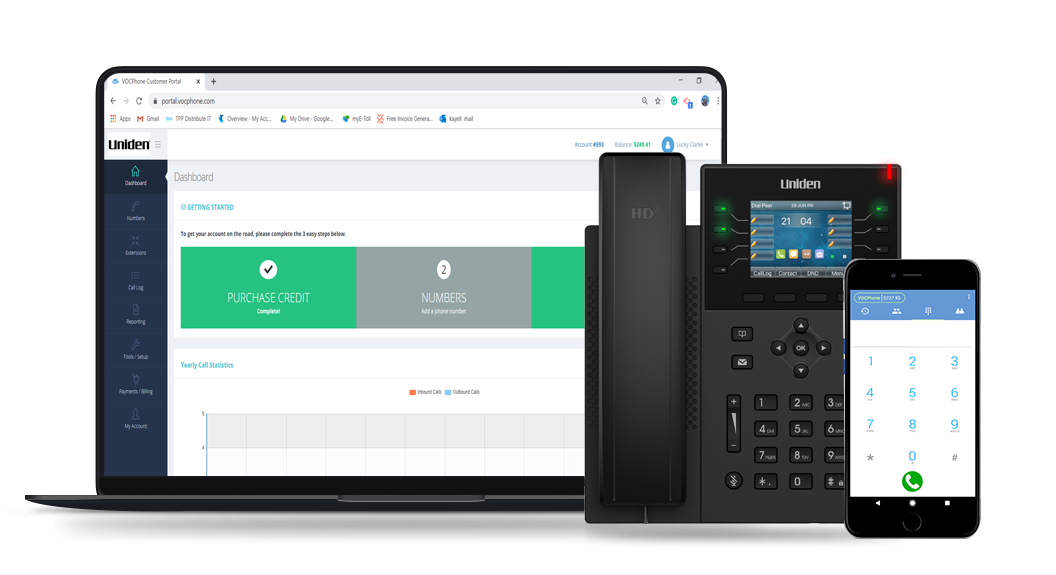
What to expect when switching from landline to VoIP
Transform your business communications with modern VoIP technology and discover why many Australian companies are switching.

Transform your business communications with modern VoIP technology and discover why many Australian companies are switching.
Telecommunications is always in a state of flux, and businesses across Australia are reimagining their communication infrastructure to stay competitive. As traditional copper networks phase out, Voice over Internet Protocol (VoIP) technology has emerged as the natural successor to conventional landline systems, offering enhanced flexibility, cost-effectiveness, and scalability.
For many organisations, the prospect of transitioning from familiar landline systems to VoIP can seem daunting. However, with proper planning and understanding, the switch can be seamless and transformative for your business operations.
Here we explore what you can expect during the transition to VoIP business phone systems, highlighting key benefits, potential challenges, and essential considerations to ensure your business makes a successful move to VoIP technology.

Your existing internet infrastructure will play a crucial role in VoIP performance. You'll need a robust, reliable internet connection with sufficient bandwidth to handle voice traffic alongside your regular data usage. Most businesses require a minimum of 100 Kbps per line for optimal voice quality. Consider upgrading your internet service if necessary, and implement Quality of Service (QoS) settings to prioritise voice traffic.
The implementation process can take between 24 hours to a couple of weeks, depending on your business size and requirements. This includes number porting, which allows you to keep your phone numbers. You'll need to configure your network settings, set up user accounts, and establish call routing rules. While this may sound technical, most VoIP providers offer comprehensive support and can handle the complex aspects of the setup process.
Your team will need time to familiarise themselves with the new system. Modern VoIP systems offer intuitive user interfaces, but there's still a learning curve. Expect to spend about 1-2 hours per employee on basic training. Most users become comfortable with core functions within the first week, though mastering advanced features may take longer. Consider appointing system champions within your organisation to support the transition.
Your billing model will shift from traditional line rental and call charges to a more predictable subscription-based system. While upfront costs might include new handsets or network upgrades, monthly operating costs decrease compared to landline systems. You'll see separate charges for features and lines rather than a single phone bill, and international calls become cheaper. So be prepared for a different budgeting approach.
Combine voice calls with video conferencing, instant messaging, and email in one platform
Sophisticated call routing, queuing, & forwarding options that adapt to your business needs
Take your phone system anywhere with mobile apps that maintain a professional presence
Insights into call patterns, response times, & communication metrics for better decision-making
Built-in features for team collaboration, including file sharing and virtual meeting rooms
Easily add or remove lines and features as your business grows, without hardware limitations
With over three decades of telecommunications expertise, Uniden provides comprehensive VoIP systems that combine reliability with innovation. Our solutions include enterprise-grade hardware, dedicated local support, and customised implementation strategies. Uniden's team of experts guides businesses through every step of the transition, ensuring minimal disruption and maximum value. Their commitment to quality and service has made them a trusted partner for thousands of Australian organisations making the switch to VoIP.

Our experts are here to guide you through a seamless transition from landline to VoIP.
Yes, you can retain your current phone numbers through a process called number porting. This ensures business continuity and prevents any disruption to your existing customer communications.
With adequate internet bandwidth and proper network configuration, VoIP call quality is excellent and often superior to traditional landlines. Modern VoIP systems use advanced codecs that optimise voice quality.
Not necessarily. Many existing phones can be adapted using VoIP adapters. However, investing in new IP phones often provides access to advanced features and better performance.
A general rule is 100 Kbps per concurrent call, plus your regular internet usage. For example, a business with 10 simultaneous calls would need at least 1 Mbps dedicated to VoIP traffic.
Yes, modern VoIP systems use robust encryption and security protocols. However, you'll need to ensure your network security is up to date and follow best practices for user authentication and access control.